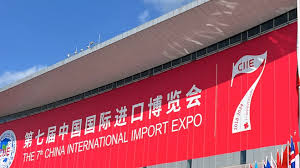Uganda’s long journey to producing its first barrel of oil is finally nearing reality. The Tilenga Project, located in the Albertine Graben and operated by TotalEnergies EP Uganda, has made significant progress and is now more than 57% complete, marking a major milestone in the country’s oil development ambitions.
Tilenga, together with the Kingfisher Project run by CNOOC Uganda Limited, forms the backbone of Uganda’s upstream oil production. In this partnership, TotalEnergies owns 56.67%, CNOOC holds 28.33%, and the Uganda National Oil Company (UNOC) controls 15%.
Under Uganda’s Production Sharing Agreements (PSAs), the government is expected to earn between 65% and 80% of all oil revenues — one of the most favorable state shares among global oil producers.
According to Julius Balamaga, Senior Drilling Engineer at the Petroleum Authority of Uganda (PAU), the project has already drilled 149 wells out of the 170 required to reach first oil.
“Initially, drilling one well took about 11 days. Now, we do it in under nine,” Balamaga said. “That efficiency saves huge costs for both the government and investors.”
Drilling currently costs around $140,000 per day, significantly lower than global averages, thanks to better technology and logistics.
A key highlight of Tilenga’s progress is the high level of Ugandan participation. Over 90% of the 150 workers at drilling sites are Ugandans — serving not only as laborers but also as engineers, supervisors, and technical experts.
To strengthen local capacity, TotalEnergies has trained dozens of Ugandan engineers at its Drilling Academy in Pau, France, followed by hands-on experience in the field.
“We already have Ugandan supervisors and drilling engineers running night shifts,” said Balamaga. “Gradually, even senior expatriate roles are being handed over to local professionals.”
At the heart of the project is the Central Processing Facility (CPF), where crude oil, gas, and water from the wells will be separated and treated before being exported through the East African Crude Oil Pipeline (EACOP).
Joseph Baluku, Civil Engineer at PAU, said the CPF will also use the extracted gas to power its operations through turbines, reducing reliance on diesel fuel.
The facility is designed to treat and reinject water back into the wells to maintain reservoir pressure, ensuring sustainable production.
TotalEnergies has prioritized environmental protection, especially given Tilenga’s proximity to Murchison Falls National Park.
Brenda Amanda, Environmental Coordinator at TotalEnergies, said the company follows strict noise, air, and waste control measures.
“Noise levels at the rig fence are capped at 40 decibels — very low by international standards. We also ensure all waste is contained and treated before disposal,” she said.
The company is also testing battery-powered drilling rigs to replace diesel generators, a move expected to cut both fuel costs and carbon emissions.
The Ugandan government, through UNOC, holds a 15% share in Tilenga, while the Petroleum Authority oversees compliance and safety.
According to Gloria Sebikari, PAU’s Manager for Corporate Affairs, about 29% of the $7.2 billion invested has already been retained in Uganda through local contracts, services, and labor.
The government has also built over 600 kilometers of new roads and two bridges in the Albertine region to support oil operations and boost local development.
Over 13,000 people are currently employed across the Tilenga operations, 91% of them Ugandans, working for TotalEnergies, contractors, and subcontractors.
“This project is not just about oil — it’s about creating jobs, training Ugandans, and building an economy that works for our people,” Sebikari said.
With drilling ahead of schedule and infrastructure nearing completion, Uganda’s first oil is expected to flow in the second half of 2026.
The integrated oil program — which includes Tilenga, Kingfisher, the refinery, and the 1,443-kilometer EACOP — is projected to generate billions of dollars in revenue and transform Uganda into an energy-producing nation for the first time in its history.
“All efforts are geared toward achieving first oil in 2026,” Ms. Sebikari affirmed. “This is Uganda’s moment.”



